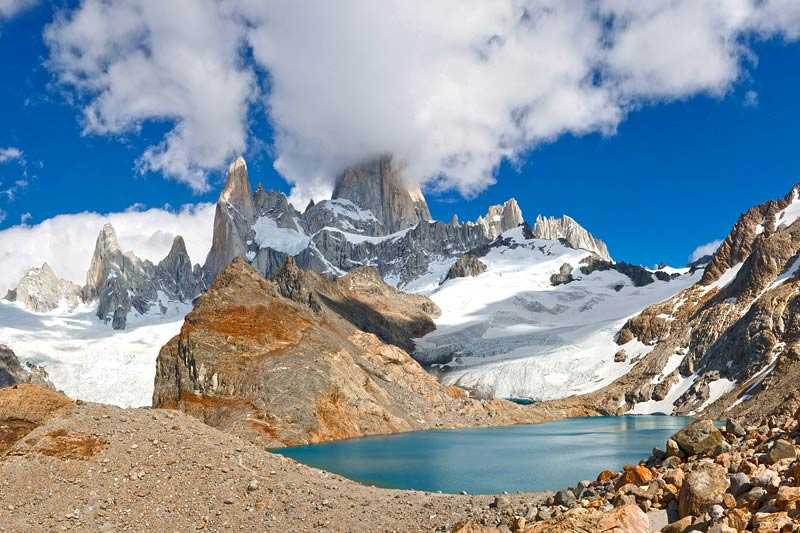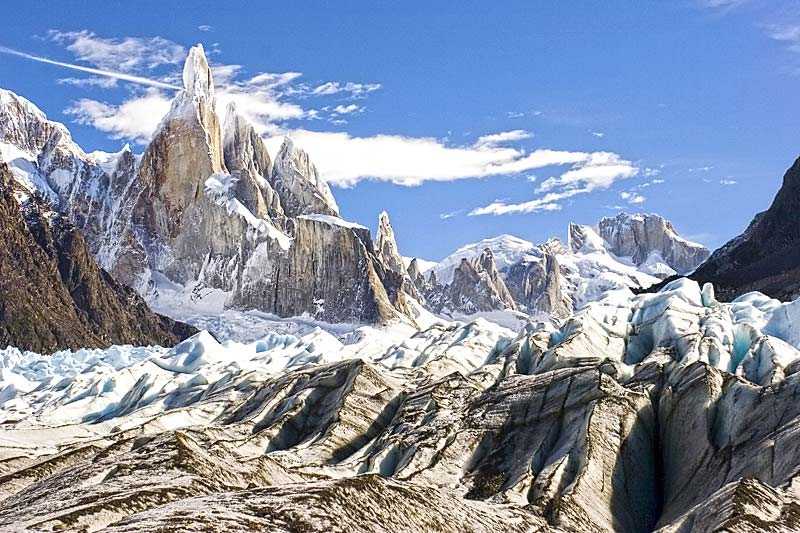Mount Cerro Torre
About Mount Cerro Torre
As one of the mountains of the Southern Patagonian Ice Field in South America, Mount Cerro Torre is the highest peak in a four mountain chain; the three other peak...
About Mount Cerro Torre
As one of the mountains of the Southern Patagonian Ice Field in South America, Mount Cerro Torre is the highest peak in a four mountain chain; the three other peaks are Torre Egger, Puntan Herron and Cerro Standhardt. Located in the Parque Nacional Los Glaciares, Mount Cerro Torre is 3,128 m (10,262 ft) high with sheer granite walls and rime ice covered summit,...
Attractions near Mount Cerro Torre
Activities
About Mount Cerro Torre
About Mount Cerro Torre
As one of the mountains of the Southern Patagonian Ice Field in South America, Mount Cerro Torre is the highest peak in a four mountain chain; the three other peaks are Torre Egger, Puntan Herron and Cerro Standhardt. Located in the Parque Nacional Los Glaciares, Mount Cerro Torre is 3,128 m (10,262 ft) high with sheer granite walls and rime ice covered summit, and is beset by notoriously bad weather, with storms from the Pacific Ocean adding fuel to those of the nearby Patagonian Ice Cap. Indeed, the locals call the strong Patagonian wind ‘the Broom of God’, with the 2,134 m (~7,000 ft) south face suffering most of all.
Activities
The mountain was long believed to have been an un-climbable mountain, mainly due to the crown rime of ice at its summit that is extremely difficult to climb over, and this still prevents many climbers from reaching the top. Mount Cerro Torre has had a controversial history. Lying in a region in dispute by Argentina and Chile and dubbed ‘an impossible mountain’ by Frenchman Lionel Terray, the first successful attempt to climb it was alleged to have been made by the Italian Cesare Maestri in 1959. No photographic record survives to prove that the mushroom-shaped summit was reached by him, and remains of this expedition have never been found, leading subsequent climbers to doubt the veracity of Maestri’s story. Maestri made another climb in 1970, this time tackling the southeast face and using a compressor, a method frowned upon by purist climbers. This route is now derisively known as the Compressor.
The first undisputed ascent was made by an Austro-Italian expedition led by Thomas Kastner in 1974. An ascent is only considered successful in climbing circles if the summit has been reached, an assertion that Maestri disputed when his 1970 climb stopped 60 metres short of the summit.
Recent climbs have also been controversial. In 2010, the Austrian David Lama admitted responsibility for the drilling of over 30 more bolts into the cliff face and hundreds of metres of rope left hanging on the Compressor route. Many of the bolts were drilled alongside cracks that are used by climbers for safety. Methods such as these are considered unethical amongst purist climbers.

